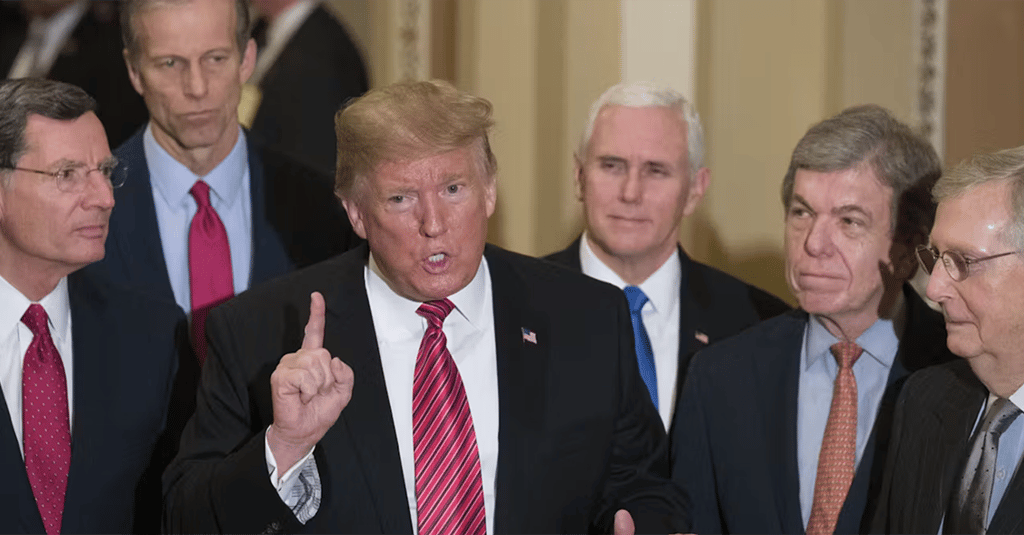The Republican Party Unraveled: Its Roots, Power Dynamics, and the Trump Effect
4/26/20254 min read


The Republican Party Unraveled: Its Roots, Power Dynamics, and the Trump Effect
Introduction: A Party Born in Crisis
The Republican Party, often called the Grand Old Party (GOP), isn’t owned by any one person or corporation—it’s a sprawling, decentralized movement shaped by millions of voters, leaders, and activists. Born in the 1850s amid fiery debates over slavery, the GOP has evolved into a powerhouse of American conservatism. But who created it, who calls the shots today, and how has Donald Trump’s influence reshaped its soul? Let’s dive into the GOP’s past, present, and the uncertainty fueling its strategy.
The Birth of the GOP: A Fight Against Slavery
In 1854, the United States was fracturing over whether new western territories should allow slavery. A group of anti-slavery advocates—thinkers, politicians, and everyday folks—came together to form a new political force. Key figures like Alvan E. Bovay, a Wisconsin lawyer who called the first meeting, Horace Greeley, a fiery newspaper editor, and Amos Tuck, a New Hampshire politician, laid the groundwork. Their rallying cry? Stop the spread of slavery. By 1860, the GOP had propelled Abraham Lincoln to the presidency, cementing its place in history. This wasn’t a party owned by one person but forged by a coalition united against injustice.
Who Holds the Reins Today?
Fast forward to 2025: the Republican Party controls both the House of Representatives and the Senate, giving it significant legislative muscle. In the House, Speaker Mike Johnson (or his successor) sets the agenda, while Senate Majority Leader John Thune steers the upper chamber. These leaders, elected by their GOP peers, wield outsized influence over what bills see daylight. But decision-making isn’t a solo act—committees, caucuses, and even rank-and-file members can sway outcomes through votes, lobbying, or public pressure.
The catch? The GOP’s slim House majority means even a few dissenters can derail plans, as seen in recent budget fights. Meanwhile, President Donald Trump, now in his second term, looms large. His agenda—think tariffs, immigration crackdowns, and deregulation—often sets the tone, but congressional Republicans aren’t just rubber stamps. They balance Trump’s demands with their priorities and voter expectations.
Are GOP Policies Still the Same?
The GOP of Lincoln’s era focused on abolishing slavery. By the 20th century, it championed free-market capitalism, low taxes, and strong national defense. Under Ronald Reagan in the 1980s, these became bedrock principles. But Trump’s rise has scrambled the script. The 2024 platform, dripping with “Make America Great Again” rhetoric, leans hard into protectionism (like tariffs on imports), a state-level approach to abortion, and anti-woke” education policies. Gone are the days of unflinching free trade and national abortion bans—hallmarks of the pre-Trump GOP.
This shift reflects a broader pivot to right-wing populism, fueled by working-class voters who feel ignored by elites. Yet, cracks remain. Some Republicans pine for the Reaganite focus on global trade and interventionist foreign policy, while others embrace Trump’s “America First” isolationism. The party’s social conservatism—gun rights, traditional values—remains steady, but its economic and cultural priorities are in flux.
Do All Republicans Agree with Trump?
Not even close. Trump’s grip on the GOP is undeniable—his 2016 and 2024 victories reshaped the party’s voter base and leadership. Most House Republicans elected since 2016 align with his vision, and loyalty is a currency in today’s GOP. But dissenters exist. Moderates, like those wary of tariff-driven economic chaos, and traditional conservatives, like the Cheney family, clash with Trump’s approach. Some senators, like Mitch McConnell, have pushed back subtly, prioritizing institutional power over MAGA fervor.
A 2025 Pew survey shows 67% of Republicans support most or all of Trump’s policies, but 55% also say GOP lawmakers shouldn’t blindly follow him if they disagree. This tension—loyalty versus independence—defines the party’s internal struggle. Trump’s polarizing style, from mass deportation plans to withdrawing from global agreements, keeps the GOP unified in public but fractured behind closed doors.
What’s the Payoff in Uncertainty?
Political uncertainty—economic jitters, cultural divides, global tensions—can be a goldmine for the GOP. Trump’s tariffs, for instance, sparked stock market volatility in April 2025, yet they rally his base by projecting strength against foreign competitors like China. Uncertainty amplifies fear, and the GOP leverages this to pitch itself as the party of security: secure borders, strong military, and economic nationalism. When voters feel the ground shifting, they often cling to bold promises, even risky ones.
This chaos also keeps opponents off balance. Democrats, still reeling from 2024 losses, struggle to counter Trump’s rapid-fire executive actions, like exiting the Paris Climate Agreement or expanding immigration enforcement. Meanwhile, the GOP’s unified control of Congress and the White House lets it push ambitious bills before the 2026 midterms, when history suggests they could lose seats. Uncertainty buys time to cement power.
Conclusion: A Party at a Crossroads
The Republican Party, born to fight slavery, now navigates a world of tariffs, populism, and Trump’s larger-than-life shadow. Its leaders hold the legislative reins, but internal rifts and a restless base keep things unpredictable. By embracing uncertainty, the GOP rallies voters and seizes the narrative—but at what cost? As Trump’s second term unfolds, the party’s identity hangs in the balance.
Thought Questions:
Can the GOP balance Trump’s populism with its traditional conservative roots, or will one dominate?
How might the party’s embrace of economic uncertainty (like tariffs) affect its 2026 midterm chances?
Should Republican leaders prioritize loyalty to Trump or independence to appeal to a broader base?
Photo Credit: Theconversation.com
hello@boncopia.com
+13286036419
© 2025. All rights reserved.